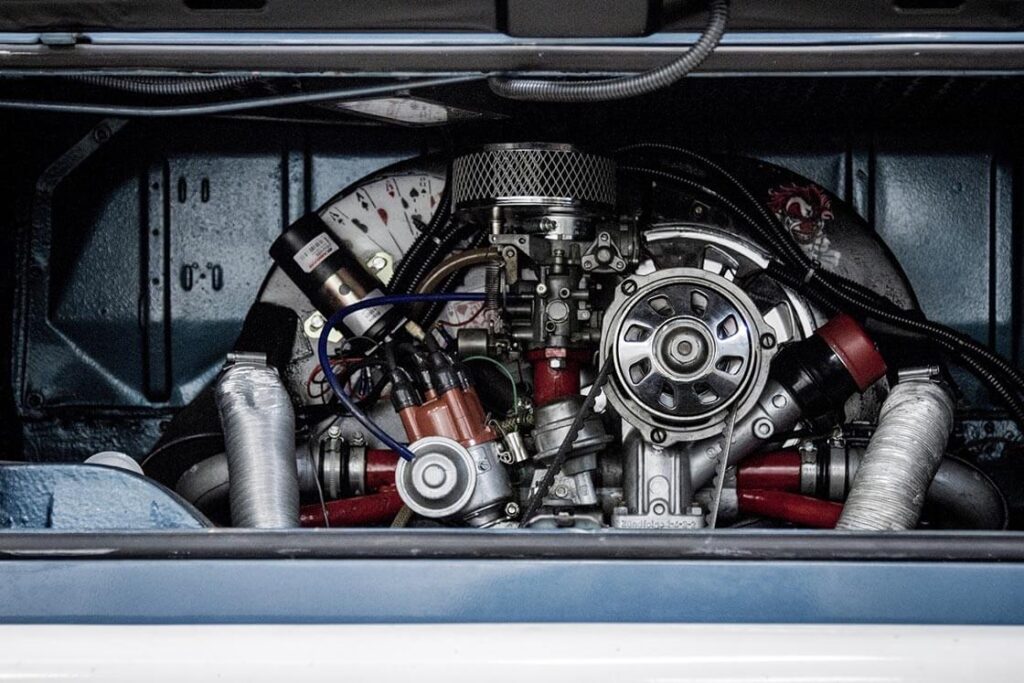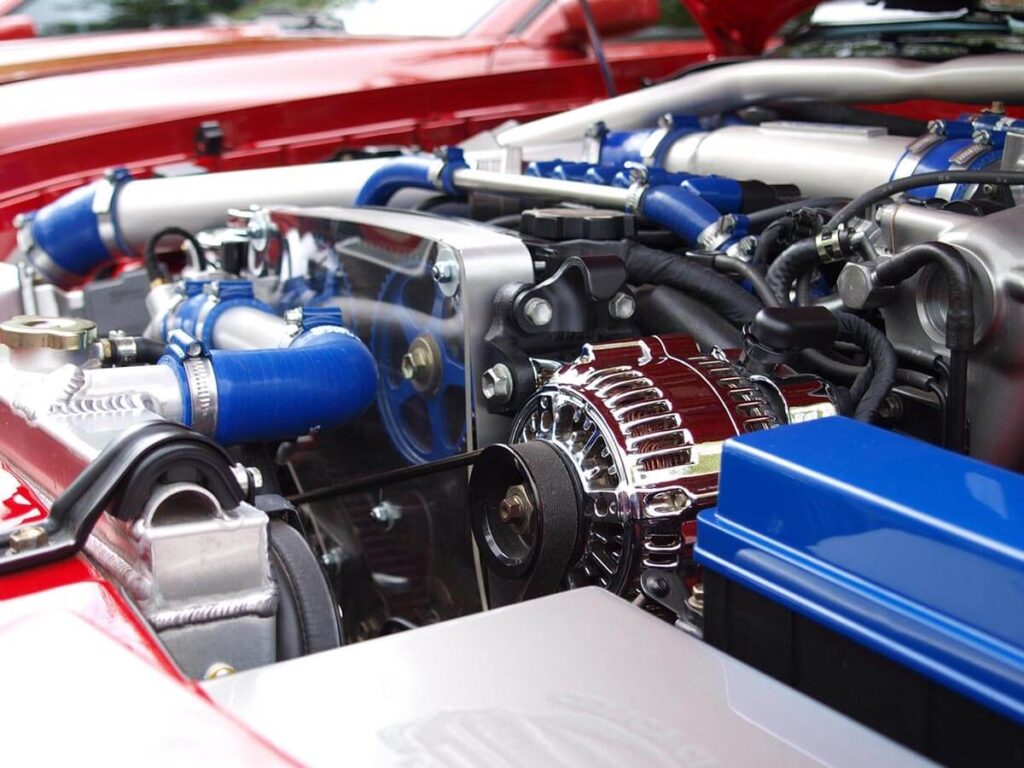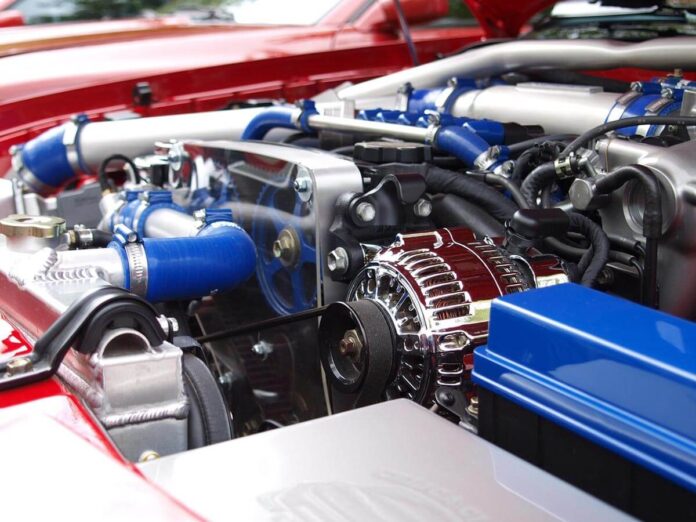Heat is an engine’s best friend: way too much of it will certainly create it to confiscate and also broaden; also little as well as it won’t run effectively, on the way to breaking.
While recent years have seen substantial growth in cars’ powertrain systems including turbocharging, hybridization as well as down-sizing, the cooling system has stayed greatly unchanged other than, possibly, for ending up being a lot smaller and faster-acting to boost effectiveness and also reduce emissions.
Below we discuss what the cooling system is, what it does, and how to maintain it.

What is the car’s cooling system?
It’s a complicated warm exchanger consisting of special coolant fluid, pipes, some smart regulating shutoffs, and growth as well as a radiator storage tank. Propelled by the water pump, coolant fluid streams from the radiator to the engine, where it travels around the major engine block, in which the pistons fluctuate, and the cylindrical tube head including the valves, where temperature levels are extremely high.
It takes a trip back to the radiator, a few of it via the cabin heating system where a small fan blows over it to carry warm air into the cabin. Cooled down, the coolant liquid begins its trip around the engine as soon as again.
What does a car’s cooling system look like?
Prop open your automobile’s bonnet and you’ll see, ahead of the engine, assuming it’s placed at the front, a slim, rectangle-shaped honeycomb panel with hoses attached to it. That’s the radiator.
Change your look back a little and also you’ll see a small, clear plastic storage tank with a cap on it, loaded with colored liquid. That’s the radiator development storage tank. Just to make sure, try to find several narrow tubes leading from it, one of them to the radiator.
Incidentally, if you’ve just been for a drive, don’t open this cap– you may be scalded by warm, pressurized coolant.
Look behind the radiator and you’ll see a huge fan, either installed on the engine or different from it. This strikes air onto the radiator to assist eliminate the warmth.
Close by, you’ll also see the pretty long belt that’s made of rubber drives or helps move various ancillary systems off the engine consisting of an odd point with tubes coming off it. That’s the water pump that sends the coolant fluid around the system.
Just how does the cooling system work?
We briefly discussed exactly how the system works over however the reality is, it’s a little smarter than that. Here’s what occurs …
Engine and Coolant is Cold
We’ll begin with you beginning the vehicle. It’s cold which isn’t great since fuel does not vaporize easily at cold temperatures, while the engine oil is chilly and also slow, and also doesn’t do a good job of lubricating the engine’s relocating components. So it requires to warm up– -quickly.

Bizarrely, the coolant system can aid. The minute you start the car, the water pump, which is driven by the engine, starts to thrust the cold coolant from the reduced container in the radiator (basically, the lower section) to the cool engine block. From below it travels with networks in the casting to the cylindrical tube head, and afterward back in the direction of the pump.
Now right here’s the smart little bit. Located close to the pump is a thermostatically controlled shutoff. If the coolant is as well chilly, the shutoff remains shut, preventing it from getting to the radiator as well as creating it to be pumped straight back to the engine uncooled, as well as around the cabin heater.
Extremely quickly the coolant starts to heat up, helping to bring warmth around the engine and increasing the warming-up procedure, so boosting the engine’s efficiency.
Engine and Coolant are Warm
An engine’s optimum operating temperature is around 2500deg C yet when the coolant gets to around 80deg C a wonderful thing occurs: the thermostatically regulated valve opens, diverting the hot coolant to the radiator through the upper radiator pipe as well as into the upper radiator container.
Naturally, it’s not magic. Wax inside the thermostat thaws as well as expands, forcing the shutoff to open. Incidentally, this modification in temperature is being kept track of by a sensing unit that communicates the information to the vehicle’s engine control system, which makes little running modifications to the gas as well as ignition systems as necessary.
In the radiator
This is where the coolant system goes from aiding to warm the engine up, to help it not obtain any kind of hotter. Like your radiator in the house, a car and truck’s radiator includes a network of pipelines ranging from the supposed top storage tank to the base tank.
Unlike your radiator in your home, though, the one in a car and truck is a thick mass of slim aluminum layers in a honeycomb structure that surrounds the pipes carrying the coolant. The warm passes from the coolant to the aluminum.
As the cars and truck move along, air can be found in utilizing the front grille and passes over these aluminum layers, whose effect is to raise the surface area of the radiator and increase the warm transfer procedure. By the time the coolant has taken a trip from the radiator’s top storage tank to its reduced tank, it’s ready to be pumped back to the engine.
The development container
As the coolant raises in temperature level it increases, creating a pressure accumulation in the system. This isn’t as negative as it appears because the rise in stress increases the coolant’s boiling factor to past 100deg C, a lot like a stress stove implies you can cook at very heats without boiling the food.
It’s vital this stress can be released or else, first, no even more coolant will be able to enter the radiator, and second, faster or later the system will certainly explode.
This is where the second little bit of coolant system magic occurs. The radiator has a cap or pressure shutoff which, when the stress reaches around 15psi, opens, permitting the coolant to move right into the growth bottle pointed out previously, so soothing the pressure.
It’s a closed system so there’s seldom any requirement to top up the coolant level, which you do when the engine is cold and by loosening the filler cap on the tank. Inspect the degree markings on the side of the tank as well as if there is a loss in the degree, check the air conditioning system hoses for leakages.
Earlier systems have an overflow pipe rather than a storage tank, so you should cover up the system using the radiator, once again when it’s chilly.
The fan
When you pause at traffic lights or get to your location as well as turn off the engine, you may hear a muffled whirring sound. That’s the electrical fan behind the radiator that blows air over it to cool it down.
It’s managed by a temperature sensing unit yet contemporary air conditioning systems are so effective that unless you are embedded traffic for an extended period with the engine operating, or you’ve been driving specifically rapidly, it hardly ever comes on.
An option to the electrical fan is one driven right off the engine using a viscous combining managed by a temperature-sensitive shutoff. It engages or disengages the fan as needed.
What is coolant fluid?
If it were simply ordinary water, life would certainly be a great deal simpler but water contains impurities that wear away the cooling system and minimize its efficiency. Not only that but water additionally evaporates at high-temperature levels and freezes at low ones.
This last characteristic is bad as having no coolant at all given that, being frozen, the coolant will certainly not move, implying the engine will certainly obtain hotter and also hotter till it confiscates. Frozen coolant expands, as well, triggering severe damage to the system.
Instead, coolant is an extremely refined, de-ionized water (in various other words, it has had all the mineral ions such as salt as well as calcium eliminated) having additives including rust preventions and, notably, anti-freeze. It’s frequently referred to as a pre-mixed coolant when anti-freeze is present.
Now, it’s vital to recognize that anti-freeze is rather an aggressive chemical and that it’s important you make use of the best sort of anti-freeze in your automobile, specifically since it’s feasible to buy it individually from coolant and add it as essential.
Many vehicles made because 1998 have aluminum engines as well as radiators for which only natural acid technology-based (OAT) anti-freeze appropriates. Autos constructed before 1998 can utilize its non-organic acid innovation option. There is two other key ins usual usage, too; one that’s based upon ethylene glycol as well as one more on propylene glycol.
Anti-freeze comes in various colors according to the cooling systems it’s compatible with as well as it’s ideal to top-up, if you have to, with the very same one. If doubtful, consult your car’s owners manual and when topping up or adding to your coolant make sure the anti-freeze, sometimes a premixed solution, provides you protection over the temperature varies your cars and truck will certainly experience.
You can measure the strength of the anti-freeze by using a hydrometer or an anti-freeze tester in your car and truck.

